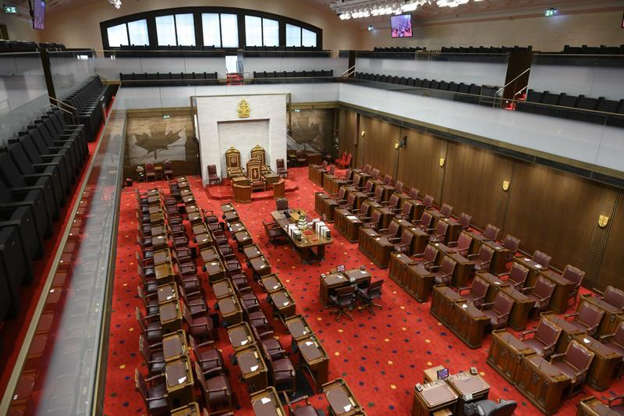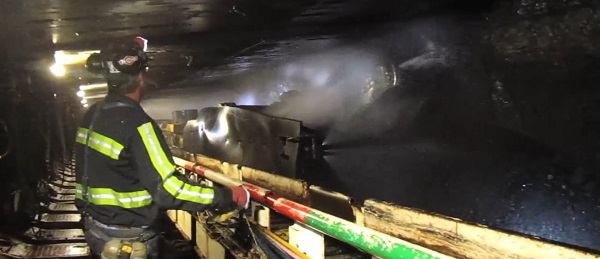Canadian Energy Centre
Opportunity knocks for Canada to become key LNG supplier as U.S. pauses projects
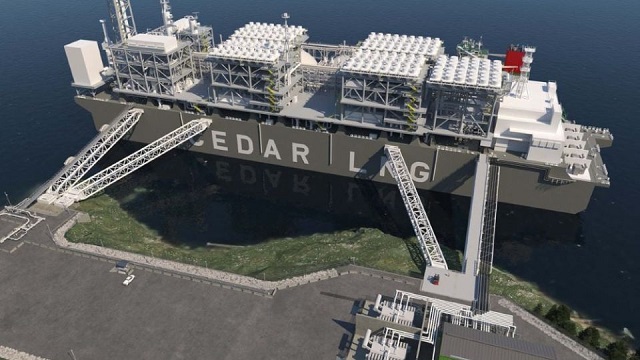
Rendering courtesy Cedar LNG
From the Canadian Energy Centre
By Cody Ciona
“Everyone wins if Canada can get into the game.”
Canada’s emerging liquefied natural gas (LNG) industry has an opportunity to become a key supplier for energy-hungry countries in Asia and beyond following the U.S. pause on new or pending LNG export approvals, industry watchers say.
With much of the world looking for alternatives to Russian natural gas following its invasion of Ukraine in 2022, the U.S. emerged as the number one global exporter of LNG. According to the International Energy Agency, the U.S. accounted for 80 per cent of additional supply in 2023.
But with the U.S. putting its LNG industry on pause, the timing could be good for Canada.
The recent completion of the Coastal Gaslink pipeline along with progress on Canada’s first LNG export projects are bringing Canada closer to becoming a key global supplier.
An opportunity to showcase clean LNG
As the LNG Canada terminal moves into its final stages of construction, Kitimat, B.C. will become the gateway for exports from Canada.
For First Nations LNG Alliance CEO Karen Ogen, this means Canada, which has so far missed the global LNG boom, will have another chance at becoming a player.
“I think this is an opportunity for us to showcase our clean LNG and I think we can do it through the various projects [underway].” Ogen said.
Those projects, which include LNG Canada and Woodfibre LNG that are under construction, along with the proposed Cedar LNG and Ksi Lisims LNG terminals, will operate with an emissions intensity less than half that of the global average.
Cedar LNG, headed by the Haisla First Nation, will operate at less than one-third of the global average.
Ogen said these projects will create significant prosperity, not just for Canada and B.C. but for Indigenous peoples as well.
“It’ll help boost our Canadian economy, it’ll help B.C.’s economy, and most specifically it will help the Indigenous people and our economy. If we’re the most disadvantaged population living in poverty, then this should help our people get out of poverty.” she said.
“Everyone wins if Canada can get into the game.”
Reduced LNG supply could increase reliance on coal
Racim Gribaa, founder and president of Global LNG Consulting Inc., said a potential decrease in LNG exports to international markets, particularly in Asia, may heighten dependence on coal, thereby escalating global emissions.
“If [importers] can’t get U.S. LNG, they would be left with very few viable alternatives including coal. And if they burn coal, that’s twice as much emissions. Coal is cheaper and reliable, but emits twice as much carbon. Countries in Asia such as China, with over 1,140 operational coal plants, are building new coal plants every week both in Asia and abroad,” Gribaa said.
Canada has a significant geographical advantage to supply LNG to Asia that can reduce associated transportation emissions by up to 60 per cent, he said.
Export terminals in B.C. are about half the distance to Asia compared to terminals on the U.S. Gulf Coast.
“The distance between Canada and the key market is a huge advantage, where we are the same distance to Asia as Australia,” Gribaa said.
“Monetizing natural gas in Canada through LNG exports not only will help reduce global emissions but it also will enhance health and economic well being of Canadians future generations.”
Establishing Canada’s LNG credibility
The starting point will be LNG Canada in 2025, which will allow Canada to export LNG on international scale, Gribaa said. It will help establish Canada’s credibility as a supplier, just as the U.S. pauses new development.
Once that credibility is established, Canadian LNG could become a bigger player on the global scale.
“Canada’s abundant natural gas reserves empower the nation to produce and export decades of dependable, cost-effective, and environmentally-friendly LNG to global markets, leveraging direct marine routes unaffected by constraints like the Panama or Suez Canals, the Strait of Hormuz, or having to navigate around the Cape of Good Hope,” Gribaa said.
“Canada stands poised to secure market share for years to come, irrespective of whether the U.S. temporarily halts or reconsiders its involvement.”
Canadian Energy Centre
First Nations in Manitoba pushing for LNG exports from Hudson’s Bay
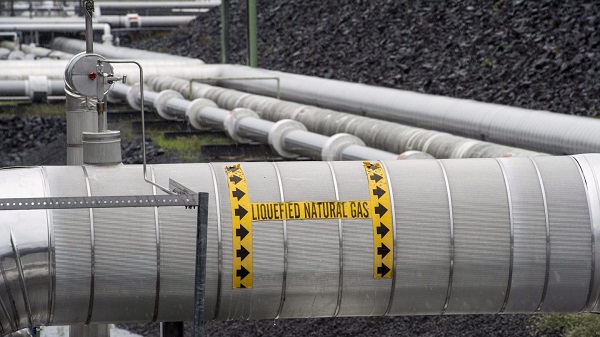
From the Canadian Energy Centre
By Will Gibson
NeeStaNan project would use port location selected by Canadian government more than 100 years ago
Building a port on Hudson’s Bay to ship natural resources harvested across Western Canada to the world has been a long-held dream of Canadian politicians, starting with Sir Wilfred Laurier.
Since 1931, a small deepwater port has operated at Churchill, Manitoba, primarily shipping grain but more recently expanding handling of critical minerals and fertilizers.
A group of 11 First Nations in Manitoba plans to build an additional industrial terminal nearby at Port Nelson to ship liquefied natural gas (LNG) to Europe and potash to Brazil.
Robyn Lore, a director with project backer NeeStaNan, which is Cree for “all of us,” said it makes more sense to ship Canadian LNG to Europe from an Arctic port than it does to send Canadian natural gas all the way to the U.S. Gulf Coast to be exported as LNG to the same place – which is happening today.
“There is absolutely a business case for sending our LNG directly to European markets rather than sending our natural gas down to the Gulf Coast and having them liquefy it and ship it over,” Lore said. “It’s in Canada’s interest to do this.”
Over 100 years ago, the Port Nelson location at the south end of Hudson’s Bay on the Nelson River was the first to be considered for a Canadian Arctic port.
In 1912, a Port Nelson project was selected to proceed rather than a port at Churchill, about 280 kilometres north.
The Port Nelson site was earmarked by federal government engineers as the most cost-effective location for a terminal to ship Canadian resources overseas.
Construction started but was marred by building challenges due to violent winter storms that beached supply ships and badly damaged the dredge used to deepen the waters around the port.
By 1918, the project was abandoned.
In the 1920s, Prime Minister William Lyon MacKenzie King chose Churchill as the new location for a port on Hudson’s Bay, where it was built and continues to operate today between late July and early November when it is not iced in.
Lore sees using modern technology at Port Nelson including dredging or extending a floating wharf to overcome the challenges that stopped the project from proceeding more than a century ago.
He said natural gas could travel to the terminal through a 1,000-kilometre spur line off TC Energy’s Canadian Mainline by using Manitoba Hydro’s existing right of way.
A second option proposes shipping natural gas through Pembina Pipeline’s Alliance system to Regina, where it could be liquefied and shipped by rail to Port Nelson.
The original rail bed to Port Nelson still exists, and about 150 kilometers of track would have to be laid to reach the proposed site, Lore said.
“Our vision is for a rail line that can handle 150-car trains with loads of 120 tonnes per car running at 80 kilometers per hour. That’s doable on the line from Amery to Port Nelson. It makes the economics work for shippers,” said Lore.
Port Nelson could be used around the year because saltwater ice is easier to break through using modern icebreakers than freshwater ice that impacts Churchill between November and May.
Lore, however, is quick to quell the notion NeeStaNan is competing against the existing port.
“We want our project to proceed on its merits and collaborate with other ports for greater efficiency,” he said.
“It makes sense for Manitoba, and it makes sense for Canada, even more than it did for Laurier more than 100 years ago.”
Canadian Energy Centre
Why nation-building Canadian resource projects need Indigenous ownership to succeed

Chief Greg Desjarlais of Frog Lake First Nation signs an agreement in September 2022 whereby 23 First Nations and Métis communities in Alberta will acquire an 11.57 per cent ownership interest in seven Enbridge-operated oil sands pipelines for approximately $1 billion. Photo courtesy Enbridge
From the Canadian Energy Centre
U.S. trade dispute converging with rising tide of Indigenous equity
A consensus is forming in Canada that Indigenous ownership will be key to large-scale, nation-building projects like oil and gas pipelines to diversify exports beyond the United States.
“Indigenous ownership benefits projects by making them more likely to happen and succeed,” said John Desjarlais, executive director of the Indigenous Resource Network.
“This is looked at as not just a means of reconciliation, a means of inclusion or a means of managing risk. I think we’re starting to realize this is really good business,” he said.
“It’s a completely different time than it was 10 years ago, even five years ago. Communities are much more informed, they’re much more engaged, they’re more able and ready to consider things like ownership and investment. That’s a very new thing at this scale.”
 John Desjarlais, executive director of the Indigenous Resource Network in Bragg Creek, Alta. Photo by Dave Chidley for the Canadian Energy Centre
John Desjarlais, executive director of the Indigenous Resource Network in Bragg Creek, Alta. Photo by Dave Chidley for the Canadian Energy Centre
Canada’s ongoing trade dispute with the United States is converging with a rising tide of Indigenous ownership in resource projects.
“Canada is in a great position to lead, but we need policymakers to remove barriers in developing energy infrastructure. This means creating clear and predictable regulations and processes,” said Colin Gruending, Enbridge’s president of liquids pipelines.
“Indigenous involvement and investment in energy projects should be a major part of this strategy. We see great potential for deeper collaboration and support for government programs – like a more robust federal loan guarantee program – that help Indigenous communities participate in energy development.”
In a statement to the Canadian Energy Centre, the Alberta Indigenous Opportunities Corporation (AIOC) – which has backstopped more than 40 communities in energy project ownership agreements with a total value of over $725 million – highlighted the importance of seizing the moment:
“The time is now. Canada has a chance to rethink how we build and invest in infrastructure,” said AIOC CEO Chana Martineau.
“Indigenous partnerships are key to making true nation-building projects happen by ensuring critical infrastructure is built in a way that is competitive, inclusive and beneficial for all Canadians. Indigenous Nations are essential partners in the country’s economic future.”
Key to this will be provincial and federal programs such as loan guarantees to reduce the risk for Indigenous groups and industry participants.
“There are a number of instruments that would facilitate ownership that we’ve seen grow and develop…such as the loan guarantee programs, which provide affordable access to capital for communities to invest,” Desjarlais said.
 Workers lay pipe during construction of the Trans Mountain pipeline expansion on farmland in Abbotsford, B.C. on Wednesday, May 3, 2023. CP Images photo
Workers lay pipe during construction of the Trans Mountain pipeline expansion on farmland in Abbotsford, B.C. on Wednesday, May 3, 2023. CP Images photo
Outside Alberta, there are now Indigenous loan guarantee programs federally and in Saskatchewan. A program in British Columbia is in development.
The Indigenous Resource Network highlights a partnership between Enbridge and the Willow Lake Métis Nation that led to a land purchase of a nearby campground the band plans to turn into a tourist destination.
“Tourism provides an opportunity for Willow Lake to tell its story and the story of the Métis. That is as important to our elders as the economic considerations,” Willow Lake chief financial officer Michael Robert told the Canadian Energy Centre.
The AIOC reiterates the importance of Indigenous project ownership in a call to action for all parties:
“It is essential that Indigenous communities have access to large-scale capital to support this critical development. With the right financial tools, we can build a more resilient, self-sufficient and prosperous economy together. This cannot wait any longer.”
In an open letter to the leaders of all four federal political parties, the CEOs of 14 of Canada’s largest oil and gas producers and pipeline operators highlighted the need for the federal government to step up its participation in a changing public mood surrounding the construction of resource projects:
“The federal government needs to provide Indigenous loan guarantees at scale so industry may create infrastructure ownership opportunities to increase prosperity for communities and to ensure that Indigenous communities benefit from development,” they wrote.
For Desjarlais, it is critical that communities ultimately make their own decisions about resource project ownership.
“We absolutely have to respect that communities want to self-determine and choose how they want to invest, choose how they manage a lot of the risk and how they mitigate it. And, of course, how they pursue the rewards that come from major project investment,” he said.
-

 International1 day ago
International1 day agoPope Francis has died aged 88
-

 International1 day ago
International1 day agoPope Francis Dies on Day after Easter
-

 International24 hours ago
International24 hours agoJD Vance was one of the last people to meet Pope Francis
-
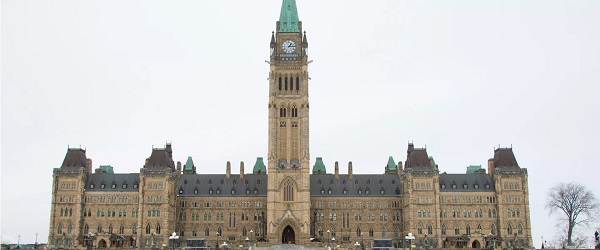
 2025 Federal Election1 day ago
2025 Federal Election1 day agoCarney’s budget means more debt than Trudeau’s
-

 2025 Federal Election13 hours ago
2025 Federal Election13 hours agoOttawa Confirms China interfering with 2025 federal election: Beijing Seeks to Block Joe Tay’s Election
-

 2025 Federal Election13 hours ago
2025 Federal Election13 hours agoReal Homes vs. Modular Shoeboxes: The Housing Battle Between Poilievre and Carney
-

 COVID-1913 hours ago
COVID-1913 hours agoNearly Half of “COVID-19 Deaths” Were Not Due to COVID-19 – Scientific Reports Journal
-

 2025 Federal Election12 hours ago
2025 Federal Election12 hours agoHow Canada’s Mainstream Media Lost the Public Trust







